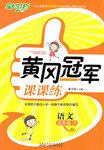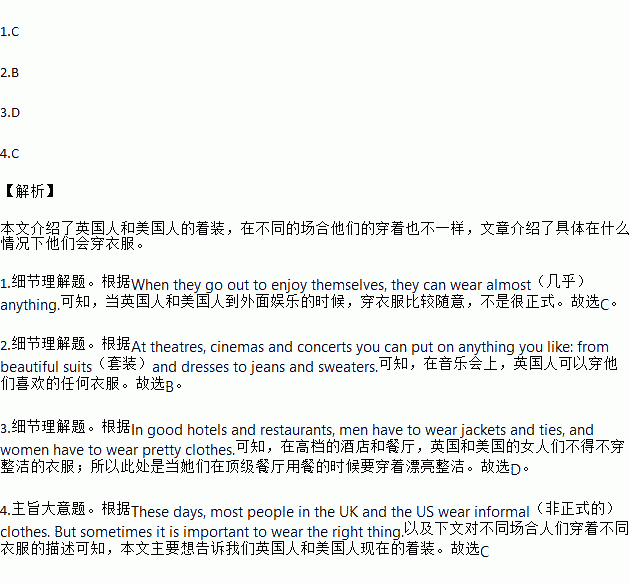题目内容
These days, most people in the UK and the US wear informal(非正式的)clothes. But sometimes it is important to wear the right thing. Many British people don't think about clothes very much. When they go out to enjoy themselves, they can wear almost(几乎)anything. At theatres, cinemas and concerts you can put on anything you like: from beautiful suits(套装)and dresses to jeans and sweaters. Anything goes, but you should look clean and tidy. But in the UK, as well as in the US, men in offices usually wear suits and ties and women wear dresses or skirts (not trousers). Doctors and business people always wear quite formal clothes. And in some hotels(宾馆)and restaurants men have to wear ties and women have to wear tidy dresses.
In many ways, Americans are less formal than British people, but they are more careful with their clothes. At home, or on holiday, most Americans wear informal or sports clothes. But when they go out in the evening, they like to look nice. In good hotels and restaurants, men have to wear jackets and ties, and women have to wear pretty clothes.
It is difficult to say exactly(确切地)what people wear in the UK and the US, because everyone is different. If you are not sure what to wear, watch what other people do and then do the same. You'll feel good if you don't look too different from everyone else.
1.People in the UK and the US wear informal clothes when they_______.
A.are in big restaurants B.are in offices
C.go out to enjoy themselves D.go out to work
2.At concerts British people_______.
A.should wear sweaters B.can wear anything they like
C.should wear suits and ties D.have to wear sports clothes
3.Women in the UK and the US have to wear tidy dresses when they are_______.
A.in offices B.meeting friends at home
C.at a party in a nice hotel D.having dinner in some top restaurants
4.What does the passage mainly tell us?
A.Women can't wear trousers in offices.
B.We should wear differently because everyone is different.
C.What British and American people wear now.
D.British people are more careful with their clothes than American people.
 黄冈冠军课课练系列答案
黄冈冠军课课练系列答案In order to learn how the students in our school spend money, we made a survey(调查) by asking them some questions. First, we asked them how much money they spent last month. And then we asked how much money they spent on junk food, books, movies, computer games, phones, transportation(交通) and other things last month. Our math teacher helped us make a graph(图表) of their answers as follows.
Total (one month): about 100 yuan per student | |||||||
Junk food | 22% | ||||||
Books | 6% | ||||||
Movies | 18% | ||||||
Computer games | 18% | ||||||
Phones | 10% | ||||||
Transportation | 14% | ||||||
Others | 12% | ||||||
阅读以上内容, 并完成下面的调查报告, 每空不超过两词。
In our school, each student spent about 1. yuan on average(平均) last month. According to the graph made by our 2. teacher, we know how much money the students spent on different things in our school. As the graph shows, they spent most on 3., covering 22% of all. It was followed by computer games and movies. Each of them was 4.. But to our surprise, the students spent 5. on books, only 6%.


 B.
B. C.
C. D.
D.